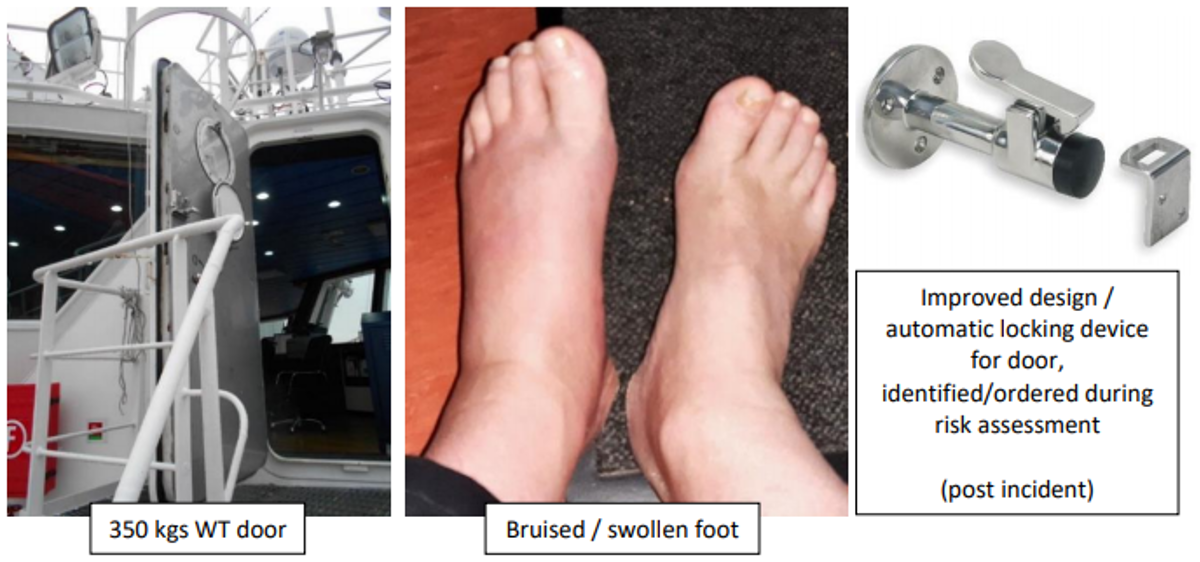How PPE works – A reminder
- Safety Flash
- Published on 16 December 2020
- Generated on 5 January 2026
- IMCA SF 34/20
- 2 minute read
Jump to:
The Marine Safety Forum (MSF) has published two recent incidents in which failure to wear PPE was a factor:
Incident 1 (MSF 20-12)
A vessel was alongside a break water berth in port, when two shore operatives who were engaged in connecting a diesel fuel hose were observed by the Officer of the Watch to be working on the edge of the quayside within the 1.0m PPE zone without inflatable lifejackets.
What was the cause
The operatives were fully aware of the 1.0m PPE requirement but decided to cross the painted line on the quay as they had left their inflatable lifejackets back at their base.
Actions
The vessel crew intervened, the job was stopped and the correct PPE was provided to the shore operatives, who were reminded of the port authority requirements to wear lifejackets when working within the 1.0m line. Once correct PPE was in place the job resumed.
Incident 2 (MSF 20-09)
The injured party stepped outside during his watch to investigate an error. On his return he entered the wheelhouse from the outer bridge deck through the weather tight door. At the time of entering the bridge, the vessel made a slight roll.
Due to the weight of the door (approx. 350 kg ), and holding the door while passing through, he lost control of the door, which trapped his foot as it slammed shut. He sustained some bruising, which was treated with a cold ice pack.
What was the cause
- While the weight of the door was widely acknowledged as a hazard, no risk assessment was in place.
- The IP was not wearing safety boots or safety shoes at the time.
Actions
- Wear safety boots or safety shoes when at work – even on the bridge.
- Conduct risk assessment on hazards and implement all reasonably possible preventative measures, including correct PPE.
- Improved design / automatic locking device for door, identified/ordered during subsequent risk assessment.

Related Safety Flashes
-
IMCA SF 06/19
5 April 2019
-
-
IMCA SF 12/17
25 May 2017
-
-
IMCA SF 28/16
18 October 2016
IMCA Safety Flashes summarise key safety matters and incidents, allowing lessons to be more easily learnt for the benefit of the entire offshore industry.
The effectiveness of the IMCA Safety Flash system depends on the industry sharing information and so avoiding repeat incidents. Incidents are classified according to IOGP's Life Saving Rules.
All information is anonymised or sanitised, as appropriate, and warnings for graphic content included where possible.
IMCA makes every effort to ensure both the accuracy and reliability of the information shared, but is not be liable for any guidance and/or recommendation and/or statement herein contained.
The information contained in this document does not fulfil or replace any individual's or Member's legal, regulatory or other duties or obligations in respect of their operations. Individuals and Members remain solely responsible for the safe, lawful and proper conduct of their operations.
Share your safety incidents with IMCA online. Sign-up to receive Safety Flashes straight to your email.